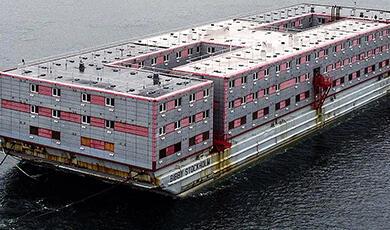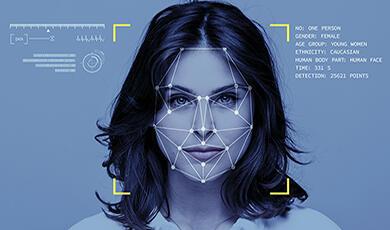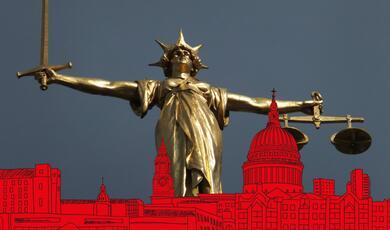Justice Online: Just as Good?
Share
- Details
- Transcript
- Audio
- Downloads
- Extra Reading
Early in 2016, the criminal and civil courts of England and Wales embarked on a modernisation programme aimed at reforming procedures that have survived for centuries. The judges themselves are helping to design the computerised courts of the future. New software will empower litigants to bring and defend cases without the need for lawyers. Judges will be able to decide cases whenever and wherever they choose to open their laptops. But will justice suffer? What if you cannot manage the technology? What if your opponent but not yourself can afford legal advice? Will the courts continue to deliver justice? Might your dispute be decided by a computer? In the first of a series of three annual lectures, the reforms will be monitored as they are planned, tested and launched. Will this project be an IT disaster? Or will it demonstrate that online justice can be just as good as the courts that have served us for hundreds of years.
Download Transcript
22 February 2017
Justice Online:
Just as Good?
Professor Joshua Rozenberg QC (Hon)
Introduction
By the year 2022, most civil disputes in England and Wales will be resolved through an online court.
That, at least, is the plan. And it’s a breathtakingly ambitious one: an online court on this scale does not yet exist anywhere in the world.
But the wider programme of modernising the courts and tribunals has already gone much further than most people realise. “We are at the beginning of a process that takes us out of a court system that the Georgians would have recognised,” said the judge in charge of information technology (IT) early in 2016, with a glance over his shoulder as far back as 300 years.
Lord Justice Fulford added: “In an era in which many people conduct a large part of their lives using some kind of an electronic device — whether it’s a smartphone or an iPad or some kind of tablet or computer — the judiciary has got to enable the ways in which we conduct cases to match the expectations of the public.”.[i]
The lord chief justice of England and Wales, Lord Thomas of Cwmgiedd, said in November 2016 that the courts’ modernisation programme was “intended to achieve the most radical reform since 1873”.[ii] As he explained, it has three main elements:
Digitisation and the use of state-of-the-art IT for all procedures and hearings.
Simplification of processes and procedures, so that there is a uniform, common procedural regime for civil, family and tribunals justice, and for crime.
Modernisation of the estate, so that buildings are used jointly by courts and tribunals more efficiently, are fit for purpose and support new ways of working.
Sir Ernest Ryder, senior president of tribunals, summed it up even more simply. “The aim that the lord chief justice and I have agreed with the Lord Chancellor is, quite simply, to strengthen the rule of law.”[iii]
The background to reform
When Lord Woolf was lord chief justice, from 2000 to 2005, he wanted court officials to install information technology in the civil courts as part of his civil justice reforms. “They set about wiring the Royal Courts of Justice and other courts at enormous expense,” his successor recalled in 2016. “They did not have the money to complete it and the wiring is now completely redundant — as everything is wi-fi.”[iv]
One reason why attempts to introduce IT in the courts failed so badly around the turn of the century was that the judges had no effective voice in running the courts in which they sat. It’s now accepted that computerisation projects fail when designers and programmers are too remote from their customers. For such systems to succeed, the people who build them must understand the needs of the people who will use them.
It follows that the people who direct the reforms must be members of the judiciary. They work closely with a body called Her Majesty’s Courts and Tribunals Service (HMCTS), which is an executive agency of the Ministry of Justice. HMCTS is responsible for running criminal, civil and family courts and tribunals in England and Wales and the non-devolved tribunals in Scotland and Northern Ireland.
Comparing the plans launched in 2015 to the failed IT reforms of the decade from 1998 to 2008, Lord Thomas said that the current changes “would never have occurred without the judiciary assuming its new role of leadership and without its active engagement with [ministers and their officials], particularly through the joint venture that is HMCTS”.[v]
HMCTS reform
The HMCTS reform programme, as it is called, was announced in March 2014. Chris Grayling, the Lord Chancellor, said the Treasury had agreed to fund it with a one-off investment averaging up to £75m per annum over the five years from 2015/16.[vi]
This might have seemed a surprising development at a time when ministers were under pressure to cut costs. But in terms of public spending £375m was pretty small — especially as the reforms were was intended to generate annual savings of £100m by 2019/20. And the government accepted that without investment the courts would simply continue to decline.
By November 2015, the £375m had turned into “a £700 million investment in new technology”[vii] with expected savings now being doubled to more than £200m a year — partly generated by selling redundant court buildings. A couple of months later, the figure became £738m[viii] over five years. Towards the end of 2016, HMCTS and the Treasury agreed that the project would run for another six years, with the money being paid from 2016/17 to 2022/23. The programme had been extended to seven years and the estimated saving had increased to £250m a year.[ix]
There was an additional investment of £270m for the criminal courts, taking the total over £1bn. But that compares favourably with the unsuccessful attempt to computerise the NHS patient records system, which was thought to have cost the taxpayer nearly £10bn by 2013.[x]
The judges have a strong influence on the reforms through their representatives on the HMCTS board: Lord Justice Fulford, Sir Ernest Ryder and District Judge Tim Jenkins. On a day-to-day basis, though, the reforms are directed by senior HMCTS officials. They employ their own team of programmers and designers, with more than 100 staff working from a large open-plan office in Croydon, south London. Some work is farmed out to independent contractors but HMCTS retains control.
“Gone are the days of single, large scale, beginning-to-end government IT projects handed to multinational IT consultancies,” Kevin Gallagher, the HMCTS digital director, said in June 2016.[xi] Instead, each step in every process is tested separately.
This process is described as “agile development” or “fail fast and fix”. The aim is to make each unit small enough to be changed cheaply and easily without jeopardising the entire project.
The central assumption behind the reform programme is that it is now possible to free the courts from the constraints of storing, transmitting and communicating information on paper. In itself, that doesn’t sound very revolutionary. For some years, courts have been publishing their judgments online and emailing copies to everyone involved in the case.
But modern IT can do very much more. First, there is online case-tracking. At its simplest, this monitors the progress of a court’s workload. If a party fails to meet a deadline, the software can set in train the appropriate sanction. Electronic diaries ensure much better use of a judge’s time.
Another vital use of IT is the electronic case file. From the earliest days, every court has held a file of documents for each case it is dealing with. If that file or folder contains printed documents, the court must have a secure back-office, on-site or nearby, in which the papers can be stored and updated by court staff. If a case is active, a judge may need to see the case file regularly. That normally requires the judge to be at the court where the file is held. Alternatively, the papers will need to be brought to wherever the judge is sitting.
Once the case file is fully electronic, it will not be stored in a court building. It can be kept on a secure server and accessed by judges and lawyers from wherever they happen to be. The court will no longer need a secure back-office and staff to file paper documents. Indeed, it may not need a building at all. Some hearings may be conducted online, using telephone or video technology. Others may take place in temporary courts, set up in underused public buildings or commercial conference suites hired by the day.
Traditional courtrooms will still be needed for criminal trials, of course. But some criminal courts are already operating without the reams of paper on which they used to rely. Judges are running cases on their laptop computers.
Even installing something as old-fashioned as a telephone on the judge’s bench can make a huge improvement in court efficiency. The judge sits in open court as usual and speaks to prosecuting and defence counsel from a speaker-phone on the bench. The conversation can be heard by everyone in court.
On the other hand, technology still has a long way to go. Sir James Munby, president of the High Court Family Division, complained in January 2017 about the lack of resources:
The video links in too many family courts are a disgrace – prone to the link failing and with desperately poor sound and picture quality. The Royal Courts of Justice in London – surely the flagship – is a case in point. My own court – Court 33, the court of the President of the Family Division – has no such facilities and no video link. When, recently, I needed a screen in my court, the only workable solution was found to be the careful placing in the jury box – relic of the days when divorce suits were tried before juries – of a vast and very heavy wooden screen which required a number of porters to install it.
On one recent occasion when, having moved to another court in the RCJ, I used a video link, everyone and everything appeared on screen in such a bright blue shade as to remind me of Avatar.[xii] On another recent occasion everything on screen appeared bathed in that green translucent glow one associates with underwater photography…
The problem, of course, is one of resources, and responsibility lies, as I have said, with HMCTS and, ultimately with ministers.[xiii]
Far from making reform more difficult, the spending cuts introduced since the 2007-08 financial crisis have made it all the more necessary. As the senior tribunals judge Sir Ernest Ryder explained in March 2016, austerity “provides the spur to rethink our approach from first principles… [to] look at our systems, our procedures, our courts and tribunals, and ask whether they are the best they can be, and if not how they can be improved”.[xiv]
The reform projects
HMCTS reform is led by the lord chancellor and the lord chief justice, acting jointly. It covers the entire administration of justice across England and Wales: criminal, civil, family and tribunals.
The reforms are being delivered through a bewildering variety of projects. Here are a few of them:
The online court, a new, more investigative, court designed to be used by non- lawyers. Initially, at least, the court is expected to handle civil claims worth up to £25,000.
The CJS (criminal justice system) Common Platform Programme. In partnership with the Crown Prosecution Service (CPS), HMCTS is working to develop a single case management system based on a digital case-file.
The Crown Court Digital Case System (DCS). This allows all professionals involved in a criminal case to share documents online and read whatever material they are entitled to see. By June 2016, six million pages of evidence had been stored on the DCS.[xv] When it is fully implemented, there will be no paper files (although special provision may be needed for unrepresented parties and jurors).
Improved video links from courts to police stations, prisons and other locations at which vulnerable witnesses may give evidence. These 3G/4G mobile links are available from non-court buildings and now from vehicles that can be parked at locations convenient for witnesses.
The ClickShare dongle, which allows advocates to display evidence stored on, or accessible from, their laptop computers on large television screens installed in courts. Until that was introduced, video recordings were often found to be incompatible with the hardware and displays available in court.
The online make-a-plea service,[xvi] which is now available for people charged with traffic offences. Users must have an internet-enabled device — such as a computer or smart phone — but a call centre is available to help users complete the online forms. Welsh-speakers are assisted by staff in Caernarfon. The system is linked to drivers’ licensing records at the DVLA. There have been more than 46,000 plea submissions since June 2015.
The eJudiciary service, an email and document management system that provides information and advice direct to decision-makers in the courtroom.
eLIS, an acronym for the courts’ electronic library and information service.
The Assisted Digital project, designed to help court users who are “challenged in the use of online services”.
The Divorce project, under which more than 99% of divorces will be granted online by a “suitably trained and legally qualified professional judge”. This was launched in January 2017 when the East Midlands regional divorce centre began requiring divorce petitions to be completed online.[xvii]
An online tribunals service. This will initially allow claimants to start and progress appeals in social security and child support cases through what are called online continuous hearings. As explained by Sir Ernest Ryder, “all participants, the appellant, the respondent government department — which in this case is the Department of Work and Pensions — and the tribunal judge are able to iterate and comment upon the basic case papers online, over a reasonable window of time, so that the issues in dispute can be clarified and explored. There is no need for all the parties to be together in a court or building at the same time. There is no single trial or hearing in the traditional sense.”[xviii] The senior tribunals’ judge described this iterative process as a ground-breaking project. “The process of on-line dispute resolution will become the norm for much of the less complex work in civil, family and tribunals jurisdictions,” he said.[xix]
A significant part of HMCTS reform is rationalising the court estate — which, in many cases, involves closing buildings. The government estimated that “for the financial year 2014-15, nearly half of our buildings were used for less than half of their available hearing time”.[xx] In February 2016, the Ministry of Justice announced plans to close 86 courts and tribunals; a further five, identified in a consultation paper a few months earlier, were reprieved. Ministers hoped that “asset sales” would fund 40% of the £738m allocated by the Treasury.
Although it will become increasingly possible for people to plead guilty online, the criminal courts of the future will be not so different from the criminal courts of the past. There will still be prosecutors trying to prove to judges or juries that defendants are guilty of the criminal charges. The rule book will be largely unchanged.
Reform of the civil courts is much more ambitious. Here, the aim is to tear up the user manual and start again.
The Briggs report
In July 2015, Lord Justice Briggs was commissioned by the lord chief justice and the master of the rolls to review the civil courts in England and Wales and make recommendations for structural change. An interim report[xxi] appeared at the end of 2015 and his final recommendations[xxii] were published in July 2016.
“The civil courts of England and Wales are among the most highly-regarded in the world,” Lord Justice Briggs said. “The integrity and incorruptibility of the judges is beyond question… [They] invariably write (or speak) their own judgments rather than leave their drafting to assistants… [Their ability] to deliver extempore judgments means that, to a much greater extent than in most of Europe, court users generally receive their decisions quickly.”
That was their greatest strength. But the “single, most pervasive and intractable weakness of our civil courts is that they simply do not provide reasonable access to justice for any but the most wealthy individuals, for that tiny minority still in receipt of legal aid, for those (mainly with personal injury claims) able to obtain no win no fee agreements with their lawyers (CFAs), for the few who obtain free advice and representation and for substantial business entities”.
The reason for this, he explained, is that they were designed by lawyers for use by lawyers. It was a “shocking state of affairs” that left litigants-in-person at a grave disadvantage. Taken together with the large-scale withdrawal of legal aid funding for civil litigation, a growing proportion of unrepresented court users were being gravely hampered in vindicating their rights.[xxiii]
But for the first time there was now an opportunity to “design from scratch and build from its foundations a wholly new court for the specific purpose of enabling individuals and small businesses to vindicate their civil rights in a range of small and moderate cases… without recourse to lawyers or with such minimal recourse that their services can sensibly be afforded”.
The opportunity had arisen, Lord Justice Briggs explained, because the government had accepted the business case for reform — that a digitised court would be cheaper to run than the current system — to an extent that justified substantial investment even during a time of austerity.[xxiv]
A court without lawyers?
There was understandable concern within the legal profession at the prospect of a court without lawyers. But Lord Justice Briggs said that this was not what he had called for.[xxv]
For one thing, a claim by a consumer against a business is likely to be handled by the defendant’s lawyers. Equally, bulk claims by utility companies against defaulting customers will probably be brought by the claimant’s legal department.
Secondly, Lord Justice Briggs recognised the advantage to litigants of taking early advice from qualified lawyers. Without an objective assessment of a claim or defence, parties with hopeless cases would not be deterred and individuals or small businesses would be at risk of under-settling their cases. His answer was to allow a fixed sum covering the cost of initial advice by qualified lawyer to be recoverable from the losing side. A similar provision might fund the cost of legal representation at some trials.[xxvi] This is referred to as “unbundling” — separating the giving of advice from the handling of litigation.
It can be difficult for people who’ve worked with traditional courts and tribunals throughout their lives to grasp that what’s now being conceived is an entirely new beast. If all goes according to plan, the online court will be used by people who’ve previously been excluded from justice on grounds of cost. It has huge potential.
How will the online court work?
The online court will be developed bit by bit, starting with claims for relatively small sums of money. To begin with it will seem frustratingly slow. The very first users will be asked to fill in a form online, print it and then send it in by post. When the form arrives, court staff will re-key the information it contains.
This is not as daft as it sounds. Developers can learn a great deal from the errors made by early users of software. The programmers will then refine the forms until people can understand them and complete them with ease. Once that’s been achieved, the information provided by court users can be fed straight into the court system.
All forms will follow the standard template of the government’s well-designed gov.uk website. We can get an idea of what users will see from existing sites, such allowing defendants to make a plea online[xxvii] and offering help with court fees.[xxviii]
Stage 2 will involve a mix of conciliation and case management, conducted partly online and partly by telephone — although probably not face-to-face. This will be done by case officers, “most of whom will be legally trained and under the supervision of the judiciary”.[xxix] These officials will be employed by HMCTS but answerable to the lord chief justice. Parties will have the right to ask for their decisions to be reconsidered by a judge.
Unless the case has settled by then, it will proceed to judgment: stage 3. The court may have enough information to decide the case without a hearing. But if the judge thinks the two sides should argue it out, there could be a telephone conference call. Perhaps the judge and the parties will be able to see and hear each other on Skype or FaceTime. And, if appropriate, there might be a traditional face-to-face hearing — but with strict time limits.
All this is a huge undertaking and one that will take years to develop. I understand that money claims online will involve 11 stages of development, each of which will have to be piloted before the next can be introduced. The later stages will require legislation.
What should we call it?
Lord Justice Briggs thought it was not a very good idea for the first court designed for use without lawyers to be called the “online court”. For one thing, not all its proceedings will be conducted online: some hearings will be by telephone and others face-to-face. Another problem is that, in due course, every court will be accessible online.
After some thought, Lord Justice Briggs suggested the name Online Solutions Court. He hoped the word “online” would fall away as people got used to the concept.
The Solutions Court is not a bad name. It strikes a reasonable balance between dignity and approachability. But Online Court is more meaningful.
The government responds
In September 2016, the Ministry of Justice published its proposals. Its main paper, modestly called Transforming our Justice System,[xxx] was issued jointly by Liz Truss, the lord chancellor, and the two senior judges responsible for courts and tribunals, Lord Thomas of Cwmgiedd and Sir Ernest Ryder. The main transformation involved technology, with a promise to develop “a single online system for starting and managing cases across the criminal, civil, family and tribunal jurisdictions”. Indeed, “some cases will be handled entirely online”.
In a consultation paper launched at the same time, Sir Oliver Heald, the justice minister, set out issues on which the government welcomed views[xxxi].
The first of these issues was referred to as “assisted digital”. This is the concern that by putting services online we may exclude as much as a fifth of the population from them. Of people in the UK who use government digital services, it’s estimated that 30% can do so unaided and a further 52% can manage to do so with some help. The remaining 18% are referred to as “digitally excluded”.
It’s essential that provision is made for them. The government sought views on whether this should be face-to-face assistance, a telephone helpline, web-chat or “access to paper channels for those who require it”.
Clearly, some combination of these resources would be appropriate. My own view is that users should not be allowed to apply on paper for services that are delivered digitally. People should, instead, be helped to access services online.
In February 2017, the government published its response. It promised support for people who have trouble with using technology. “In particular,” it said, “we will ensure that our assisted digital support takes into account the needs of those who are elderly or have disabilities, those with poor literacy or English skills, and those who lack access to technology because of cost or geography.”
The government said it would work with independent suppliers to provide a network of accessible, quality-assured assistance. “Telephone and webchat services will also be available and clearly signposted for those who already have access to IT but require extra support, and paper channels will be maintained for those who need them.”
The criminal courts
In February 2017, the government announced that these plans would go ahead with a somewhat eclectic group of offences: railway fare evasion[xxxiii], tram fare evasion[xxxiv] and possession of an unlicensed rod and line.[xxxv] Why not bus fare evasion? Or a motoring offence? These would follow, ministers promised, if the pilot was successful.
An individual convicted through the procedure would not be “sentenced by a computer or algorithm”, the government insisted. “The detail of the penalty will be set out in secondary legislation and the amount of the standard penalty to be imposed on an offender will be specified for each offence.”[xxxvi]
Arguing against what he believed would be “virtual reality” courtrooms, the Bar chairman said barristers should not be “shy of standing up for the value of traditional human, physical, real, face-to-face contact in the delivery of justice by one of Her Majesty’s judges, seated one hopes not in a pop-up or a mobile court but a place where the majesty of the law is still discernible”.[xxxvii]
On a personal level, too, barristers are wary of change. One leading advocate, who described himself as a supporter of courtroom IT, told me he found it easier to make notes with pen and paper while addressing a court. The barrister believed it would always be helpful for advocates and juries to have a paper copy of the core bundle — the most important documents and arguments in the case.[xxxviii]
But another defence counsel I spoke to had invested in two pieces of equipment that offered the best of both worlds. One was an Apple MacBook — a laptop computer that allowed access to the online digital case file and anything else online. That was always open in front of him. Alongside it in court was an iPad Pro with an Apple Pencil — a stylus that enabled the barrister to make handwritten notes in the electronic equivalent of the distinctive blue courtroom notebooks that barristers like to use. Each case had its own such notebook. When the case was over, its notebook was uploaded to the defence area of the appropriate digital case file.
There are still many outdated systems in use and, I fear, some outdated individuals. But sit in on a hearing of any significance in the High Court or above and you will see junior counsel tapping away on their laptops, taking full notes of the proceedings. It is by no means unusual to see judges and lawyers touch-typing — something that would have looked very eccentric just a few years ago.
Speaking in October 2016, Sir Ernest Ryder his tribunal judges were piloting an innovative way of dealing with disputes in the property tribunal. It involved “the concurrent hearing of tribunal and court proceedings relating to property before one specialist panel so that the litigant can avoid going to separate places to get a complete solution to their property problems”. And, he added, these concurrent hearings might evolve into a single hearing before a single specialist judicial forum. “There need be no distinction in the future between a specialist tribunal judge and a specialist courts judge,” he said.[xxxix]
First, though, there will have to be enabling legislation. A Prison and Courts Reform Bill is expected from the Ministry of Justice towards the end of February 2017 and will be allowed to “cross over” to the next session of parliament. In headline terms, this will be seen as paving the way for the new online civil court referred to by the lord chief justice. But its long-term effect will be to allow the restructuring of a system of justice that — with the exception of tribunals — has been largely unchanged since 1873. By the time we reach the 150th anniversary of that momentous year, justice will have been transformed once again.[xl]
© Professor Joshua Rozenberg QC, 2017
[i] Interview February 2016. At that time, the biggest single change in the civil courts since 1873 had been the introduction of a single procedural code — the CPR — together with active judicial case management.
[ii] https://www.judiciary.gov.uk/wp-content/uploads/2016/11/lcj-report-2016-final-web.pdf
[iii] Speech to the Bar Conference, 15 October 2016.
[iv] http://www.parliament.uk/documents/lords-committees/constitution/Scrutiny/ucCC270416lcj.pdf Q8 Apparently, the Treasury provided about a third of the sum requested and the Lord Chancellor’s Department spent it all on infrastructure. “It was like paying for a road system but not investing in cars,” one insider said.
[v] https://www.judiciary.gov.uk/wp-content/uploads/2015/06/ucl-judicial-independence-speech-june-2015.pdf paragraph 32. He referred to “the Executive”.
[vi] https://www.gov.uk/government/news/chris-grayling-reform-of-the-courts-and-tribunals At that stage, there was no mention of an online court: ambitions were limited to issuing claims online and managing cases electronically — as well as more comfortable chairs for court-users. Plans to close court buildings were not made explicit.
[vii] https://hansard.parliament.uk/commons/2015-11-25/debates/15112551000003/SpendingReviewAndAutumnStatement
[viii] See https://www.judiciary.gov.uk/wp-content/uploads/2016/01/lcj_report_2015-final.pdf
[ix] I can find no formal announcement of this.
[x] http://www.publications.parliament.uk/pa/cm201314/cmselect/cmpubacc/294/294.pdf paragraph 5.
[xi] https://www.gov.uk/government/speeches/modernisation-of-justice-through-technology-and-innovation
[xii] A film, released in 2009.
[xiii] https://www.judiciary.gov.uk/wp-content/uploads/2014/08/view-from-the-president-of-family-division-16-jan-17.pdf
[xiv] https://www.judiciary.gov.uk/wp-content/uploads/2016/03/20160303-ryder-lecture2.pdf paragraph 16.
[xv] Equivalent to a pile of paper the height of the Shard skyscraper. https://www.gov.uk/government/speeches/modernisation-of-justice-through-technology-and-innovation Later in 2016, the pile was said to have grown to the height of the Burj Khalifa, the tallest structure in the world.
[xvi] https://www.gov.uk/make-a-plea
[xvii] https://www.lawgazette.co.uk/practice/nottingham-to-host-online-divorce-pilot/5059674.article
[xviii] https://www.judiciary.gov.uk/wp-content/uploads/2016/03/20160303-ryder-lecture2.pdf paragraph 29.
[xix] Speech to the Bar Conference, 15 October 2016.
[xx] https://www.gov.uk/government/uploads/system/uploads/attachment_data/file/499518/national-consultation-document.pdf
[xxi] https://www.judiciary.gov.uk/wp-content/uploads/2016/01/CCSR-interim-report-dec-15-final-31.pdf
[xxii] https://www.judiciary.gov.uk/wp-content/uploads/2016/07/civil-courts-structure-review-final-report-jul-16-final-1.pdf
[xxiii] https://www.judiciary.gov.uk/wp-content/uploads/2016/01/CCSR-interim-report-dec-15-final-31.pdf, paragraph 1.18.
[xxiv] https://www.judiciary.gov.uk/wp-content/uploads/2016/07/civil-courts-structure-review-final-report-jul-16-final-1.pdf paragraph 6.58.
[xxv] http://www.lawgazette.co.uk/law/briggs-online-courts-will-not-offer-second-class-legal-service/5055771.fullarticle
[xxvi] https://www.judiciary.gov.uk/publications/civil-courts-structure-review-final-report/ paragraphs 6.38. 6.39.
[xxvii] https://www.gov.uk/make-a-plea
[xxviii] https://www.gov.uk/get-help-with-court-fees
[xxix] https://www.judiciary.gov.uk/wp-content/uploads/2016/12/law-works-lecture-mr-20161205.pdf paragraph 6.
[xxx] https://www.gov.uk/government/uploads/system/uploads/attachment_data/file/553261/joint-vision-statement.pdf
[xxxi] https://consult.justice.gov.uk/digital-communications/transforming-our-courts-and-tribunals/supporting_documents/consultationpaper.pdf See also related documents here: https://consult.justice.gov.uk/digital-communications/transforming-our-courts-and-tribunals
[xxxii] https://www.gov.uk/government/publications/transforming-our-justice-system-joint-statement
[xxxvi] https://consult.justice.gov.uk/digital-communications/transforming-our-justice-system-assisted-digital/results/transforming-our-justice-system-government-response.pdf
paragraph 21(f).
[xxxvii] http://www.barcouncil.org.uk/media/509125/final_version_inaugural_address_2017.pdf
[xxxviii] Paul Keleher QC, quoted in Counsel magazine, July 2016, p27 http://www.counselmagazine.co.uk/articles/the-digital-drive
[xxxix] https://www.judiciary.gov.uk/wp-content/uploads/2016/10/20161015-spt-speech-annual-bar-and-young-bar-conference.pdf
[xl] A longer version of this paper called The Online Court: will IT work is available from Amazon as an eBook: https://www.amazon.co.uk/Online-Court-Will-work-ebook/dp/B01L9ODHF0/
This event was on Wed, 22 Feb 2017
Support Gresham
Gresham College has offered an outstanding education to the public free of charge for over 400 years. Today, Gresham plays an important role in fostering a love of learning and a greater understanding of ourselves and the world around us. Your donation will help to widen our reach and to broaden our audience, allowing more people to benefit from a high-quality education from some of the brightest minds.


 Login
Login











